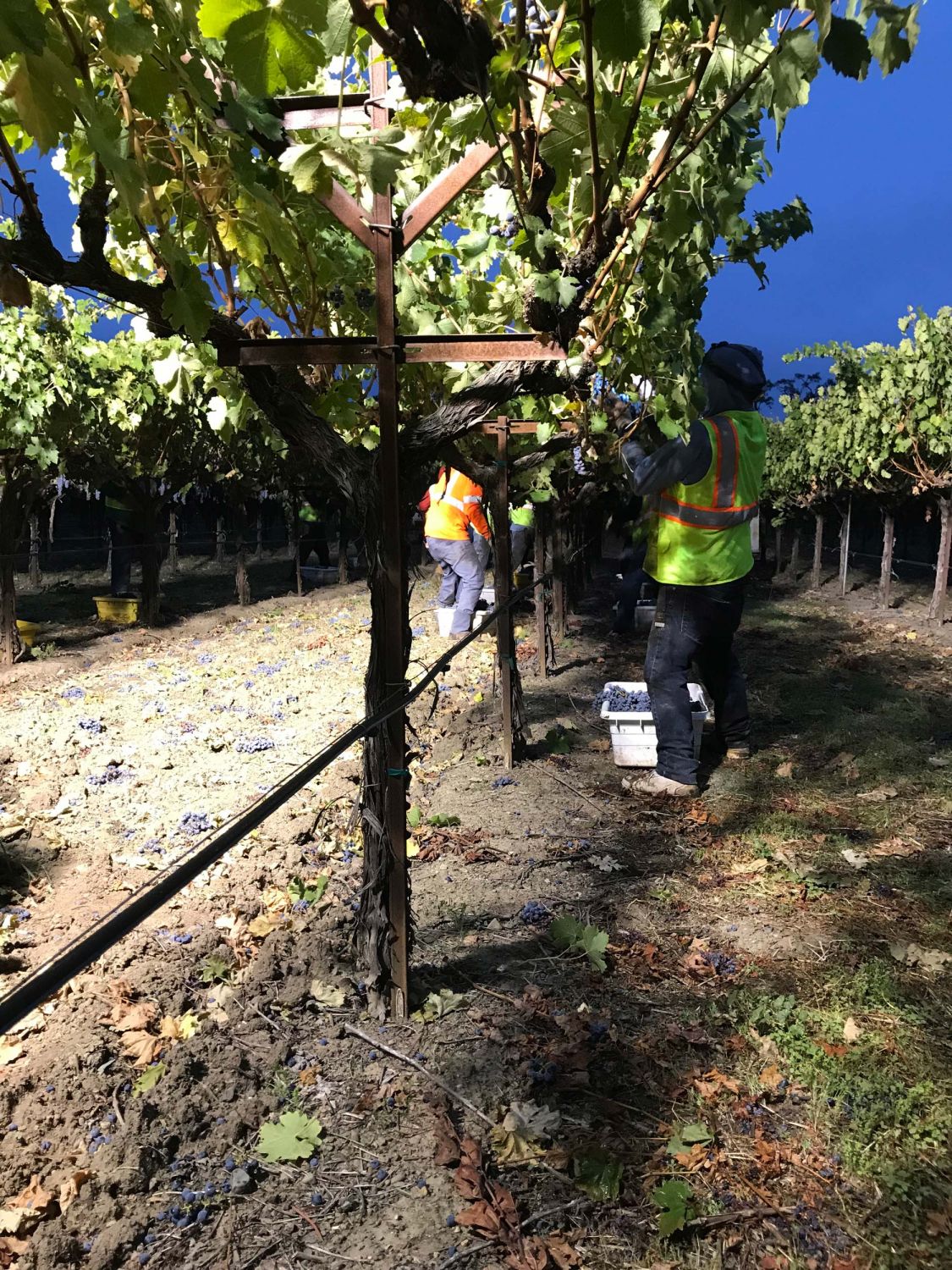$35 Flat Rate Ground Shipping on Orders of 6 or More Bottles

A fair amount of time is spent communicating with the vineyard manager to be sure the crews and equipment are going to be totally devoted to getting the fruit in as quickly as possible after removal from the plant.
Of course it is clear these hot macerations were not optimal, but it was “just the way things were done” given the need to go after the fruit at optimal ripeness and harvest quickly enough to get “all the tons in”. The use of antioxidants (such as sulfites) was a bit more aggressive (than today) and the introduction of things like heat exchangers and rapid cooling techniques came quickly. One of the obvious reasons to avoid the hot juice was to get a handle on what he juice chemistry before the (must) started fermenting (from the indigenous yeast populations).
The wine business was expanding pretty rapidly, so with all the money being invested, all the “players” involved put up their “A game” and the industry saw rapid improvements in fruit handling equipment and technologies. Improvements in viticulture was also rapid as newer vineyards came in with new rootstocks, scion wood, and farming techniques.
In the last few years, the biggest change has been the decline of the availability of “hand labor”. It is increasingly difficult for the “seasonal” laborer (primarily of latino origin) to find their way to the fields. Laborers are at the very least “semi-skilled” and their value is also in high demand in many other endeavors including construction, food service and the like. Many latinos have excellent skills in concrete (the main building material from home), metal working, anything that requires a skilled hand.
For these reasons, it is more common now to find vineyard managers short of labor during their busiest time. This leads to delays in scheduling the picks, and of getting the picks in on time. This situation has at least led to most laborers receiving good treatment from employers and relatively good pay. But the work is VERY hard and finding other ways to make equal pay doing something “easier” any laborer looks for.
So viticulturists look to mechanization to make up the difference. More vineyards are managed mechanically than before, although again, the “fine wine” vineyards still rely on the “hand” to do most of the work. Mechanical harvesting is being used far more than in the past but it is virtually impossible to find a harvesting machine that can pick a vine clean with little or no damage of the fruit in addition to NOT including leaves, twigs and other “ MOG “ ( material other than grapes ) and enormous amounts of juice.